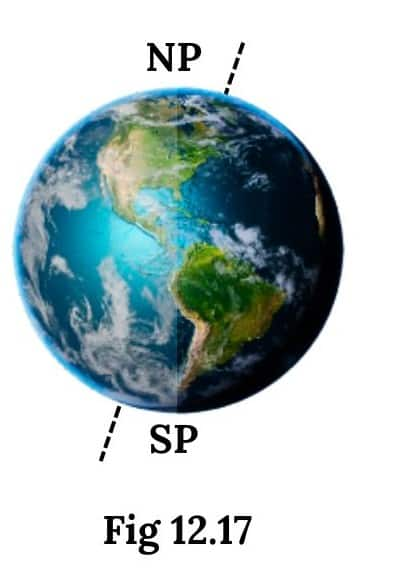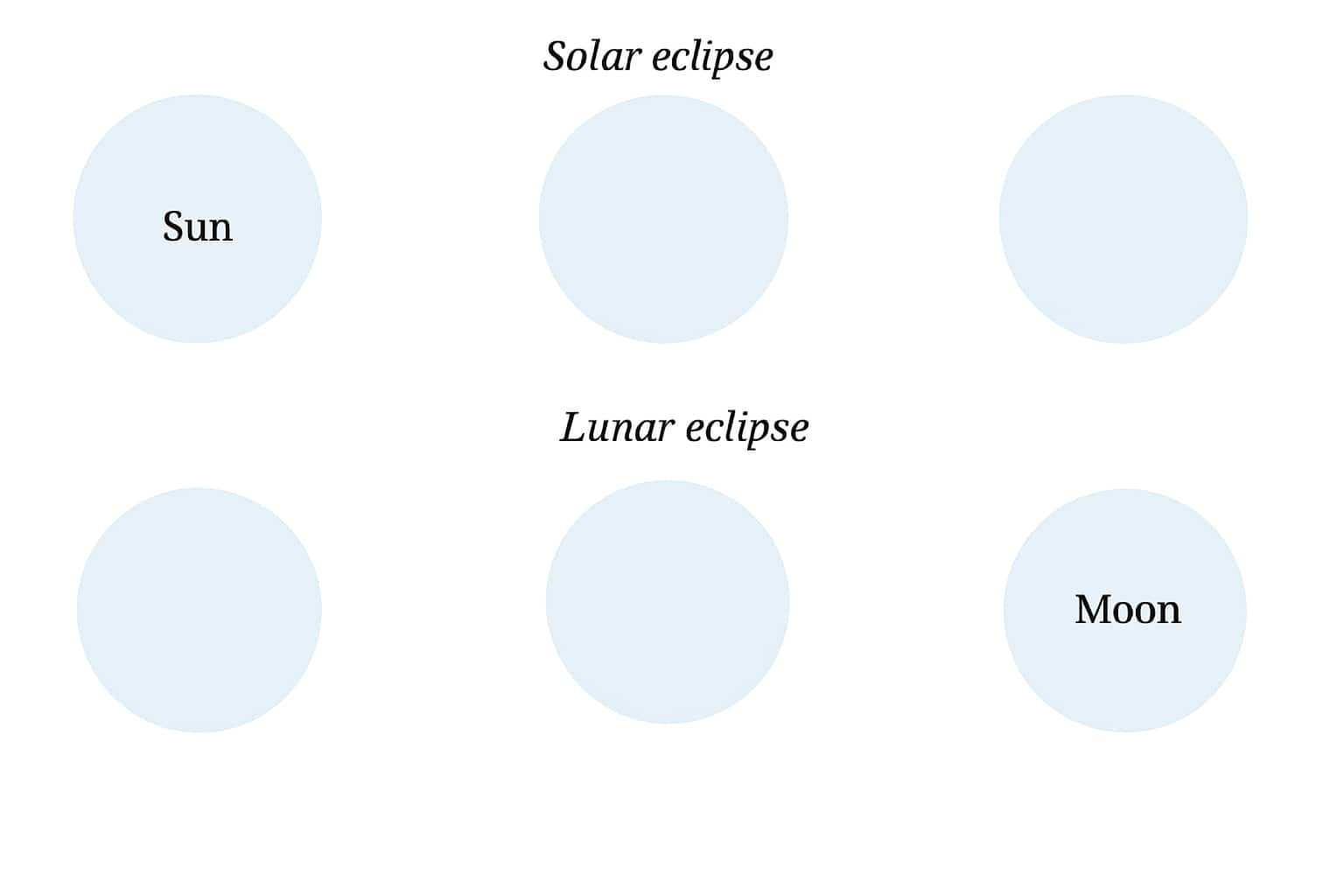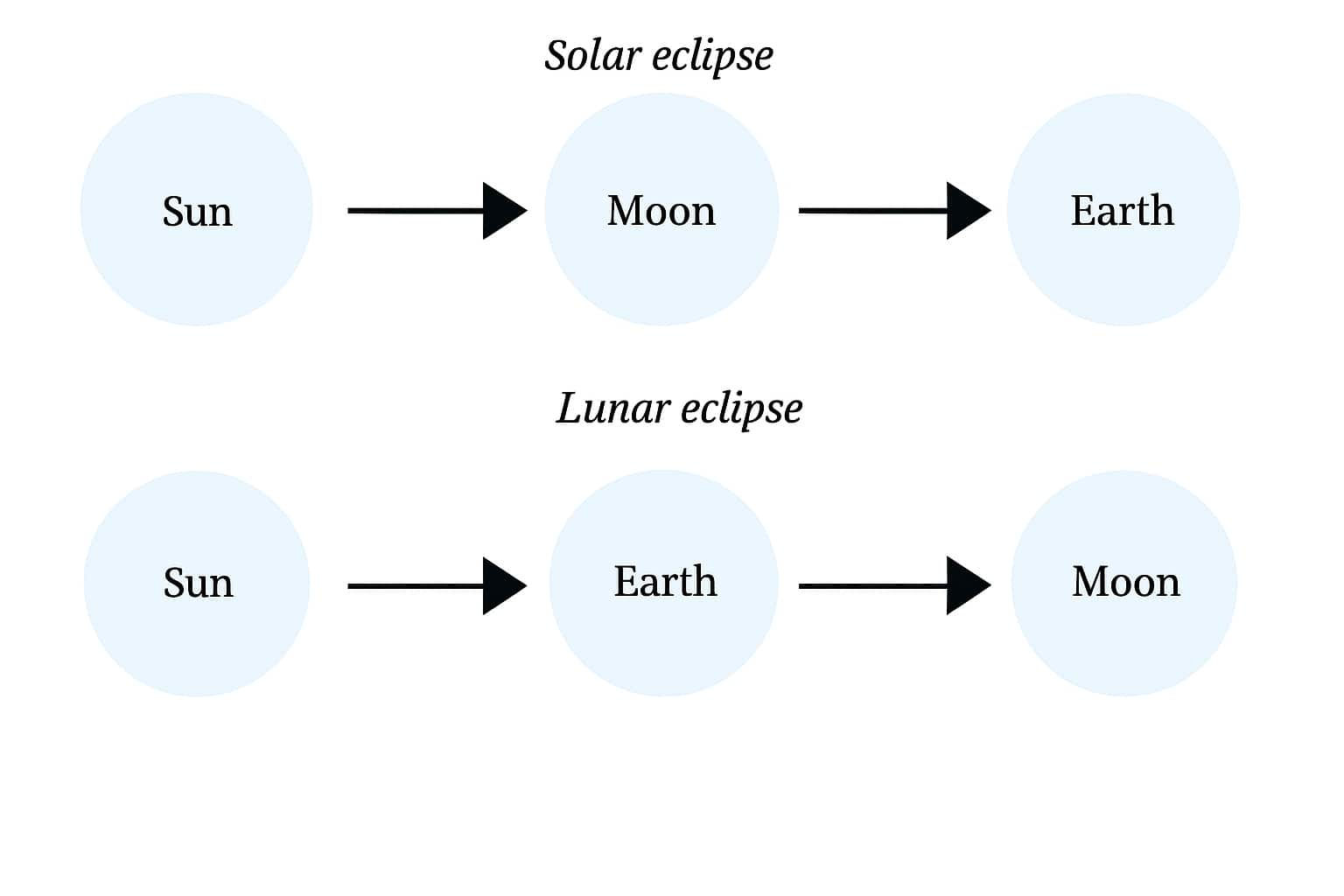Aakash Repeater Courses
ApplyTake Aakash iACST and get instant scholarship on coaching programs.
The NCERT Solutions for Class 7 Science Chapter 12 Earth, Moon, and the Sun help students in learning about the relation and motion between the three important celestial bodies. The solutions of this chapter inform students that the Earth rotates around its axis and responds to the Sun with day and night and alternating seasons. These solutions further teach students about the phases of the Moon and how the position of the Moon changes because it moves around the Earth.

The chapter "Earth, Moon, and the Sun" discusses important topics like solar and lunar eclipses, tides, and why the Moon changes shape. Students discover how the Sun is the main source of energy for life on Earth, and how the Moon bounces sunlight back to glow at night. The answers are presented clearly, so that students can easily absorb and retain the concepts. These NCERT Solutions help students to prepare well for their school examinations and create a solid foundation for their future studies in science.
Students can download the full PDF solutions for the chapter Earth, Moon, and Sun to revise all the main topics easily. It covers topics like lunar, solar eclipse, rotation, and revolution of Earth. This PDF is simple to understand and can be used both online and offline for quick revision.
The solved exercise questions are given below, which are given in easy and clear language. By referring to these solutions, students can understand the concepts easily.
Question 1:
In Fig. 12.17, how many hours of sunlight do the North Pole and the South Pole receive during one rotation of the Earth?

Answer:
The North Pole gets sunlight for 24 hours because it faces the Sun during that time. The South Pole remains in darkness for the full 24 hours as it is turned away from the Sun. This happens due to the tilt of the Earth’s axis during rotation, which changes how sunlight falls on different parts of the Earth.
Question 2:
Fill in the blanks
(i) Stars rise in the _________ and set in the ___________.
(ii) Day and night are caused by the Earth’s __________________.
(iii) When the Moon fully covers the Sun from our view, it is called a _____________ solar eclipse.
Answer:
(i) East, West
(ii) rotation
(iii) total
Stars appear to rise in the east and set in the west. Day and night happen because the Earth rotates on its axis. When the Moon comes exactly in front of the Sun and hides it completely from view, it is called a total solar eclipse.
Question 3:
State whether True or False
(i) Lunar eclipse occurs when the Sun comes between the Earth and the Moon.
(ii) Sunrise happens earlier in Gujarat than in Jharkhand.
(iii) In Chennai, the longest day occurs on the summer solstice.
(iv) We should watch the solar eclipse directly with our naked eye.
(v) Seasons occur due to the tilt of Earth’s axis of rotation and its spherical shape.
(vi) The Earth’s revolution around the Sun causes day and night.
Answer:
(i) False
(ii) False
(iii) True
(iv) False
(v) True
(vi) False
Lunar eclipses happen when Earth is between the Sun and the Moon. Jharkhand sees the sunrise earlier than Gujarat. In Chennai, the longest day is on the summer solstice. We should never see a solar eclipse directly. Seasons occur because of Earth’s tilt. Day and night are caused by Earth’s rotation, not revolution.
Question 4:
Padmashree saw the Orion constellation nearly overhead at 8 pm yesterday. When will she see Orion overhead today?
Answer:
She will see Orion about 4 minutes earlier, around 7:56 pm today. This happens because Earth rotates a little more each day to complete its revolution around the Sun. As a result, stars and constellations appear slightly earlier every night, changing our view of the night sky bit by bit over the year.
Question 5:
Nandhini saw a group of stars rising at midnight on 21 June. When will she see the same group of stars rising at midnight next year?
Answer:
She will see the same group of stars rising at midnight again on 21 June next year. This is because Earth takes around 365 days to complete one full orbit around the Sun, and the night sky repeats in a yearly cycle. So, stars appear in the same position again on the same date next year.
Question 6:
Abhay noticed that when it was daytime in India, his uncle, who was in the USA, was generally sleeping as it was night-time there. What is the reason behind this difference?
Answer:
This happens because the Earth rotates from west to east. So, when one side of the Earth faces the Sun, it is day there. The other side, which faces away, has night. India and the USA are on opposite sides of the Earth. That’s why when it’s daytime in India, it is night in the USA.
Question 7:
Four friends used the following ways to see the solar eclipse. Who among them was being careless?
(i) Ravikiran used a solar eclipse goggle.
(ii) Jyothi used a mirror to project the Sun’s image.
(iii) Adithya saw the Sun directly with his eyes.
(iv) Aruna attended a programme arranged by a planetarium.
Answer:
Adithya was being careless. Looking at the Sun directly, even during an eclipse, can seriously harm our eyes. It is very dangerous. The other friends used safe methods like eclipse goggles, mirrors, or attended a guided event where precautions are taken. We must always use proper safety methods to observe a solar eclipse.
Question 8:
Fill in the circles in Fig. 12.18 appropriately with one of the following: Sun, Moon, Earth.

Fig. 12.18
Answer:

In a solar eclipse, the Moon comes between the Sun and the Earth. In a lunar eclipse, the Earth comes between the Sun and the Moon. This blocks sunlight from reaching the Moon. These positions create different kinds of eclipses seen from Earth.
Question 9:
The Moon is much smaller than the Sun, yet it can block the Sun completely from our view during a total solar eclipse. Why is it possible?
Answer:
Although the Moon is much smaller than the Sun, it is also much closer to Earth. From Earth, both appear almost the same size in the sky. So when the Moon moves exactly in front of the Sun, it can block the Sun completely for a short time. That is why we can see a total solar eclipse.
Question 10:
The Indian cricket team's matches in Australia are often held in December. Should they pack winter or summer clothes for their trip?
Answer:
They should pack summer clothes. Australia is in the Southern Hemisphere, where seasons are opposite to those in India. December is winter in India, but it is summer in Australia. So, it will be hot there, and the players should carry light and comfortable clothes instead of woollen ones.
Question 11:
Why do you think lunar eclipses can be seen from a large part of the Earth when they happen, but a total solar eclipse can be seen by only a small part of the Earth?
Answer:
Lunar eclipses can be seen from anywhere on Earth where the Moon is visible. This is because Earth’s shadow is large and can cover the Moon from many places. But a solar eclipse can only be seen where the Moon’s small shadow falls. That’s why total solar eclipses are visible only in a narrow region.
Question 12:
If the Earth’s axis were not tilted concerning the axis of revolution, what would be the effect on seasons?
Answer:
If the Earth’s axis were not tilted, there would be no seasons like summer or winter. Every place would receive the same amount of sunlight throughout the year. The length of day and night would stay almost the same. There would be no major changes in weather during the year, and the concept of seasons would not exist.
Understand the concepts of control and coordination thoroughly and apply them logically to answer questions effectively.
Begin by understanding the concepts of rotation (Earth spinning on its axis) and revolution (Earth orbiting the Sun), and how these lead to day, night, and the changing seasons.
Focus on the relative positions and movements of the Earth, Moon, and Sun, and learn how these cause phenomena like phases of the Moon, solar and lunar eclipses, and variation in day length.
Use diagrams to visualise the positions during eclipses, phases of the Moon, and the tilt of Earth's axis, as these are crucial for answering descriptive and diagram-based questions
Practice answering textbook and extra questions by explaining processes step-by-step, using scientific terms, and supporting your answers with clear, labelled diagrams.
Students can increase their understanding by referring to the NCERT Solutions for Class 7 Science. They can also perform simple activities or models (like using balls and a torch) to understand eclipses.
Also, check the NCERT Books and the NCERT Syllabus here:
The chapter "Earth, Moon, and the Sun" explains in simple words how the movements and positions of these bodies cause day and night, different seasons, eclipses, and the changing shapes of the Moon.
The Earth, Moon, and the Sun chapter explores how these three celestial bodies interact to cause day and night, seasons, and eclipses. It also explains the phases of the Moon and why we observe different stars at different times of the year.
Question 1: Which phenomenon occurs when the Moon comes directly between the Earth and the Sun, blocking sunlight from reaching the Earth?
a) Lunar eclipse
b) Solar eclipse
c) New moon
d) Full moon
Answer: b) Solar eclipse
Explanation:
A solar eclipse happens when the Moon moves between the Earth and the Sun, casting a shadow on Earth and partially or fully blocking the Sun’s light from reaching certain areas. This can only occur during the new moon phase. In a total solar eclipse, the Moon completely covers the Sun as seen from a small area on Earth, while in other places, a partial eclipse is observed. This alignment is rare and brief, making solar eclipses special astronomical events.
The chapterwise solutions are given below:
Seasons are caused by the tilt of the Earth’s axis and its revolution around the Sun. As the Earth moves around the Sun, different parts receive varying amounts of sunlight, leading to changes in seasons.
Rotation is the spinning of the Earth on its own axis, causing day and night (completes in 24 hours). Revolution is the movement of the Earth around the Sun, causing seasons (completes in about 365 days).
A solar eclipse occurs when the Moon comes between the Earth and the Sun, blocking sunlight from reaching the Earth. A lunar eclipse happens when the Earth comes between the Sun and the Moon, casting its shadow on the Moon.
Days are longer in summer because the Earth's axis is tilted, and during summer, your part of the Earth is tilted towards the Sun, receiving sunlight for a longer duration each day.

Take Aakash iACST and get instant scholarship on coaching programs.

This ebook serves as a valuable study guide for NEET 2025 exam.

This e-book offers NEET PYQ and serves as an indispensable NEET study material.

As per latest syllabus. Physics formulas, equations, & laws of class 11 & 12th chapters
As per latest syllabus. Chemistry formulas, equations, & laws of class 11 & 12th chapters
As per latest 2024 syllabus. Study 40% syllabus and score upto 100% marks in JEE